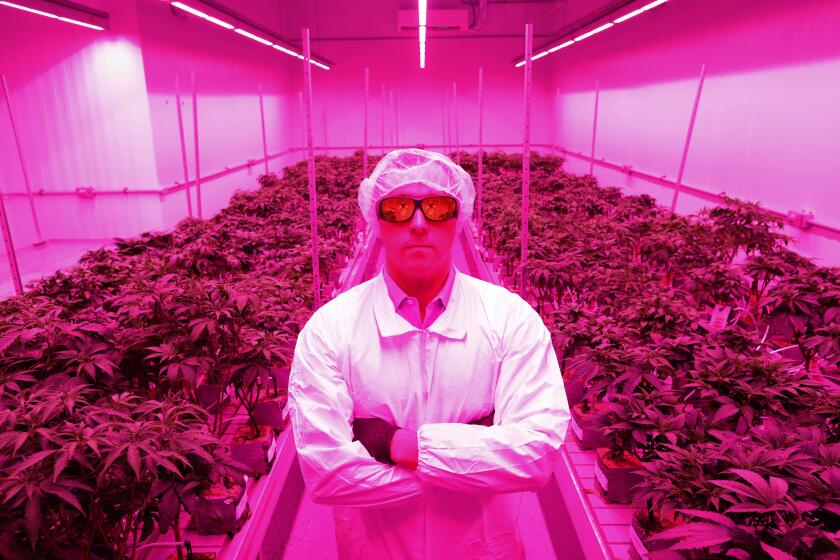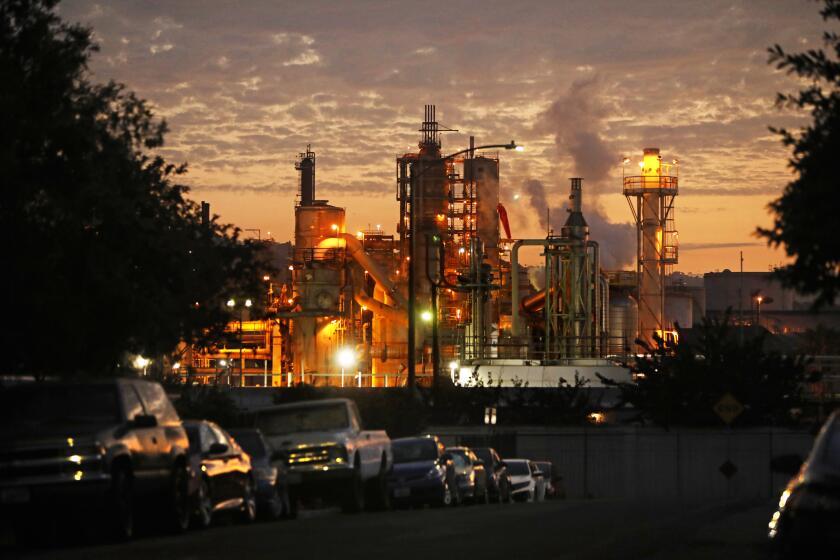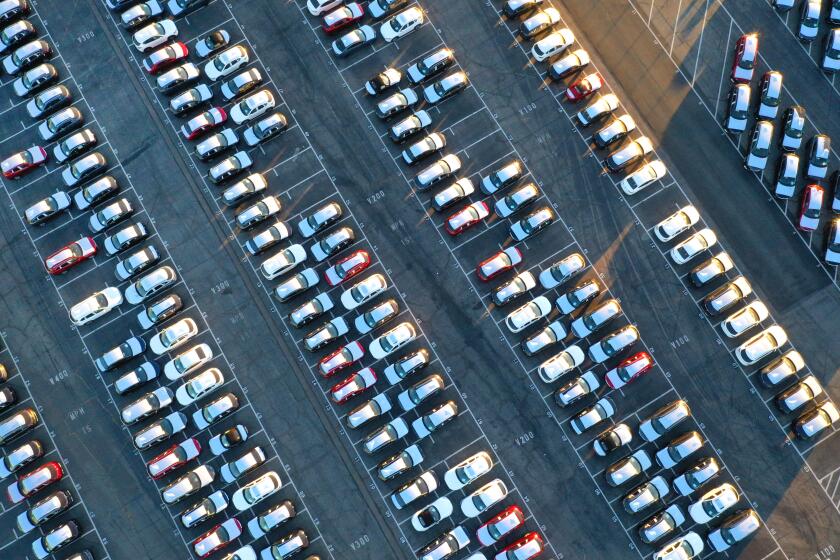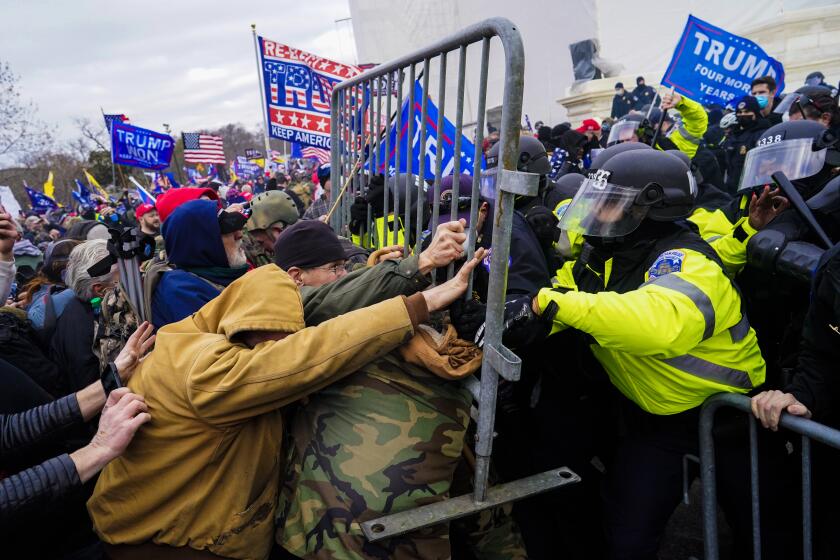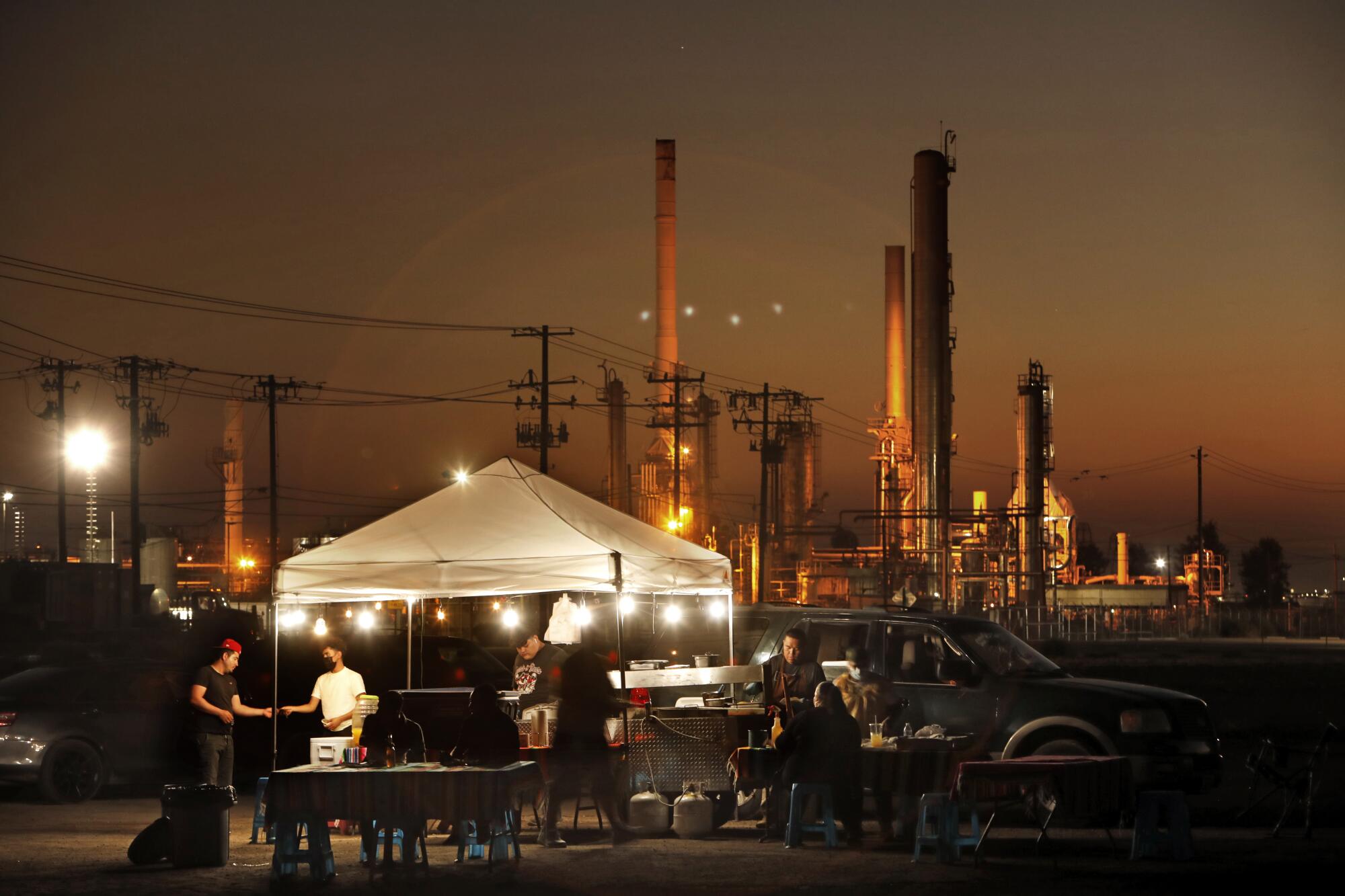
- Share via
LAMONT — Residents in this economically stressed patch of the San Joaquin Valley gripped by respiratory sickness were not surprised to learn local officials had exempted all four area fuel refineries from fully complying with a new state air quality rule.
“This is a low-income, Hispanic community where a lot of the people are foreign laborers who are not going to say anything,” said Jose Mireles, 59, who lives down the road from a Kern Oil & Refining Co. facility that processes 25,000 barrels of crude oil daily. “Sometimes you are inside your house, the doors are closed, the windows are closed, and you can still smell it.”
What did surprise Mireles was that the state attorney general put the full weight of his office behind the residents, joining Earthjustice and other environmental groups in suing the air regulators. The legal pursuit showcases a California model for protecting overburdened communities that other states and the Biden administration are working to replicate.
It is built around California’s uniquely sophisticated screening tool that pinpoints census tracts most overburdened with pollution and where it originates. The tool, called CalEnviroScreen, uses the data to direct resources to communities overwhelmed by toxic air and economic hardship — and to force local officials to consider that history when granting permits.
The Biden White House is overseeing the creation of a nationwide replica of California’s screening tool as part of a presidential directive to federal agencies to make confronting environmental injustice central to their mission.
Pollution data California collected in the Bakersfield region were key to the state’s action after the San Joaquin Valley Air Pollution Control District gave refineries a pass on some of the new rules requiring high-tech air monitoring equipment. Now, the district has orders from a Fresno judge to draft new regulations.
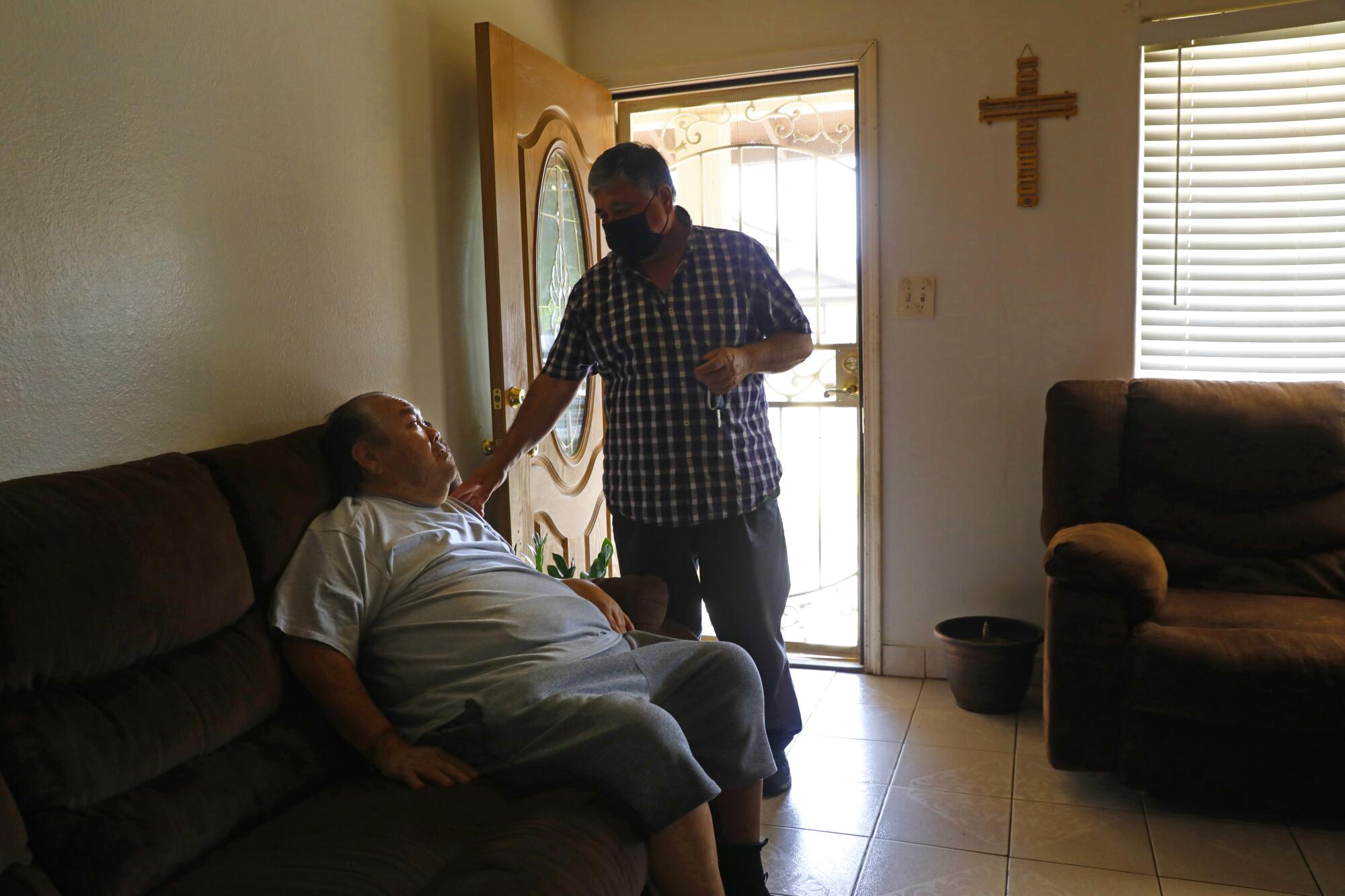
Kern Oil & Refining Co. President and Chief Executive Jennifer Haley said in a statement that a “one size fits all” approach is unfair when her facility releases less pollution than the state’s largest refineries. She said the company will show the court new data demonstrating that a less expensive plan approved by the air board meets state requirements.
Officials from the air board said in a statement that the ruling brought clarity to complicated state requirements and that monitoring equipment will be installed around the refineries.
“We want to use every tool in the toolbox that we have available to protect communities that live at the intersection of pollution and poverty,” said California Atty. Gen. Rob Bonta, who recently expanded the environmental justice bureau his predecessor, Xavier Becerra, launched before becoming President Biden’s Health and Human Services secretary.
The tool has been used by state officials to help residents in a struggling Vallejo community block a cement factory that threatened to add substantially more pollution and truck traffic to the neighborhood. In San Bernardino, state officials are using it in a bid to protect residents in overburdened neighborhoods from the dirty air threatened by a new freight hub for Amazon and other retailers. And in the nearby Inland Empire city of Fontana, where residents complain an influx of warehouse truck traffic is already choking neighborhoods, the state is fighting a planned mega-warehouse the city approved next to a school.

In California’s Inland Empire, dozens of mega-warehouses for Amazon, UPS and other companies are choking the cities with traffic and air pollution. Some argue that the jobs warehouses provide aren’t worth the cost, while others say it’s online shopping that’s the real problem.
“The state is acknowledging what environmental justice communities have been saying for so long,” said Alvaro Sanchez, vice president of policy at the Oakland-based Greenlining Institute. “They are the hardest hit and the worst hit, through no fault of their own. It is systemic. There is a history of redlining, disinvestment, lack of political capital to fight toxic facilities in neighborhoods. Having this come from the top is just such a game-changer.”
No state has had a bigger impact on the direction of the United States than California, a prolific incubator and exporter of outside-the-box policies and ideas. This occasional series examines what that has meant for the state and the country, and how far Washington is willing to go to spread California’s agenda as the state’s own struggles threaten its standing as the nation’s think tank.
California is an obvious canvas for such programs, because the state’s environmental inequity is so pronounced. On the American Lung Assn.’s rankings of the nation’s most polluted places, six of the top 10 cities are in California, with Bakersfield at No. 1. It is the predominantly Latino and Black neighborhoods in those cities that are suffering the most. The state’s poorest areas are among the nation’s most vulnerable to extreme heat, and homes alongside the state’s power plants, oil refineries and landfills are disproportionately occupied by people of color. California has more oil refineries than all but Texas and Louisiana, and a warehouse boom unmatched anywhere else shows no signs of slowing.
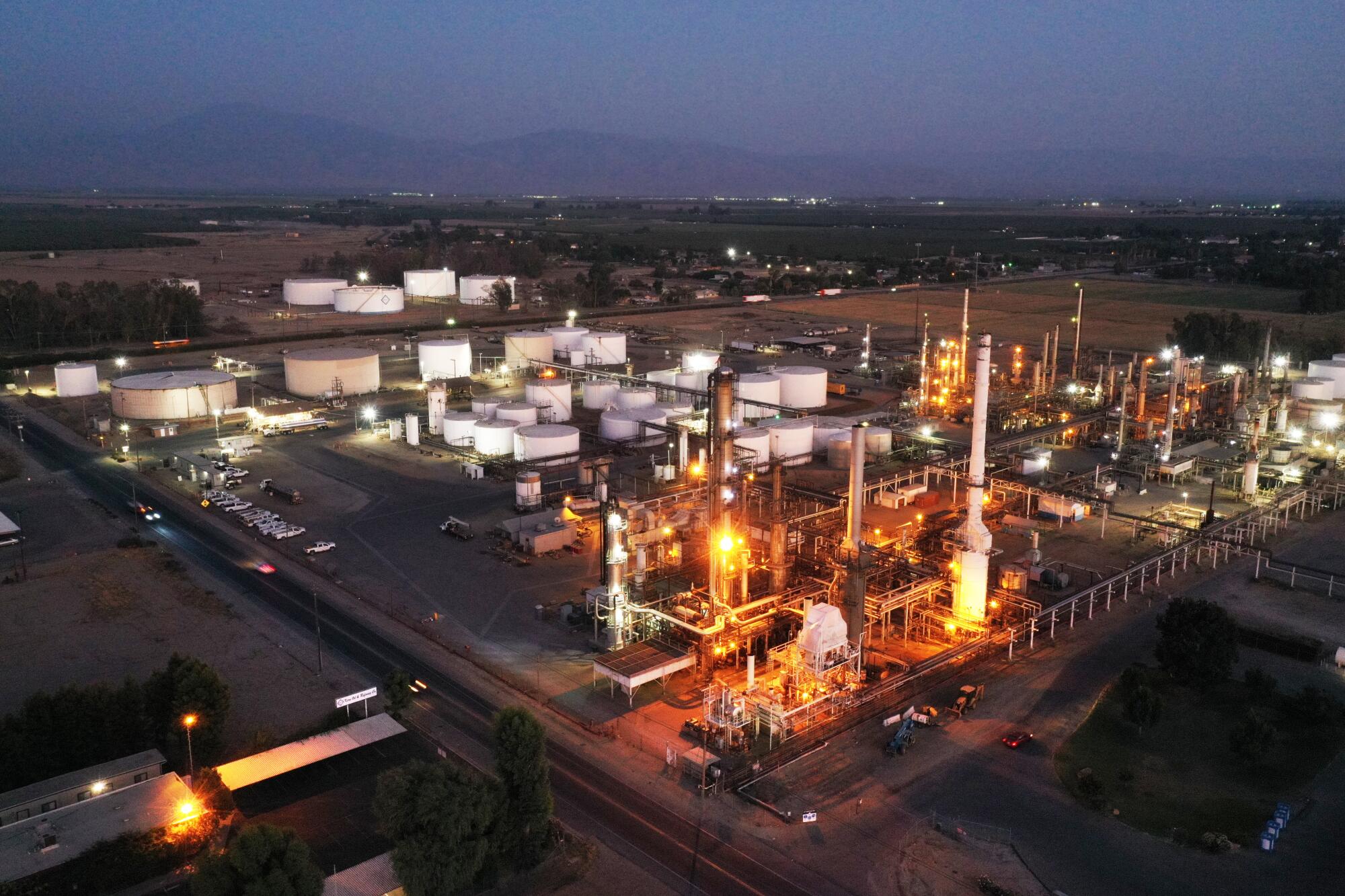
The Greenlining Institute is among several California groups guiding the Biden administration on putting the state’s model to practice nationwide. The administration has taken several steps in that direction, most notably with its Justice40 plan that aims to deliver 40% of the benefits from federal investment in climate and clean energy to disadvantaged communities. California has had similar mandates for years.
California legalized medical weed 25 years ago, spurring a nationwide shift. But federal government rules stymie research on marijuana’s potential.
The federal Environmental Protection Agency last month entered into what it described as a “first in the nation” partnership with the state to share tools and resources for identifying and protecting overburdened communities. And the U.S. attorney’s office in the Eastern District of New York this year launched an environmental justice unit resembling the bureau at the California attorney general’s office. Also in New York, state officials are looking to build their own version of CalEnviroScreen.
In California, the attorney general’s office leaned on the screening tool to build a case against the expansion of the former Norton Air Force Base in San Bernardino, which Amazon plans to use as a West Coast cargo hub. The project includes construction of a 658,500-square-foot air cargo warehouse, which will draw 26 flights and at least 500 truck trips daily, according to the attorney general’s office.
The state is partnering with Earthjustice in a lawsuit accusing the Federal Aviation Administration, the local airport authority and the project developers of overlooking the high asthma rates and other health problems in the nearby San Bernardino-Muscoy community. CalEnviroScreen ranks the community in the top 5% of the state’s most polluted areas, with some of the highest levels of ozone and particulate matter. More than 95% of the people in the mostly Latino community live below the poverty level.
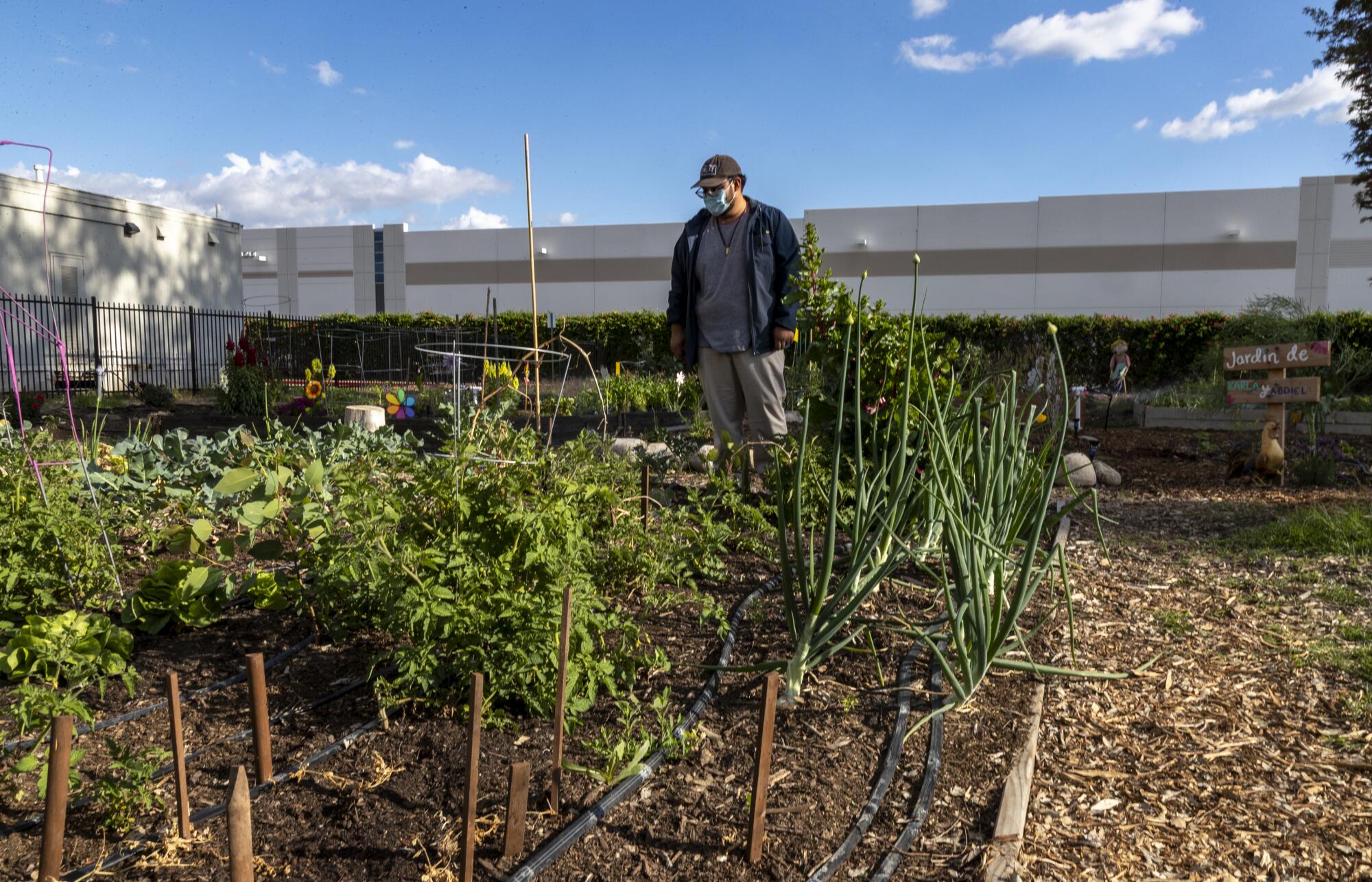
“We’re really concerned about what the impact of this is going to be,” said Jorge Osvaldo Heredia, who lives blocks from the runway. “The air quality is already pretty bad. It’s some of the worst in the whole world. ... We can’t continue to just give everything away without seeing some real benefits for the community.”
Heredia said he believes the people in his economically struggling neighborhood are being devalued. “It really is an insult to our community that people are seen here as just cheap labor.… You’re kicking people when they are down.” The San Bernardino International Airport Authority declined to comment on the case, citing the litigation.
The plan was approved over the objection of hundreds of residents who filed comment letters opposing it. The initial plan for the airport was to convert it for use for passenger flights that would ease congestion at Ontario and LAX and bring the community a welcome economic boost. A spacious passenger terminal with numerous gates and ticketing stations sits vacant at the old air base. That project drew a damning grand jury report alleging gross financial mismanagement, an FBI corruption investigation — and no passenger flights.
Yet the state’s effort to stop the facility from becoming a major cargo hub for Amazon is tied up in the fraught politics of the shipping and logistics industry. Though Amazon is keeping arm’s length from the litigation — noting it is not a defendant in the lawsuit — the local airport authority and the developers it is working with warn the state’s action could put 400 construction workers out of jobs and upend plans to hire 1,000 more permanent employees onsite.
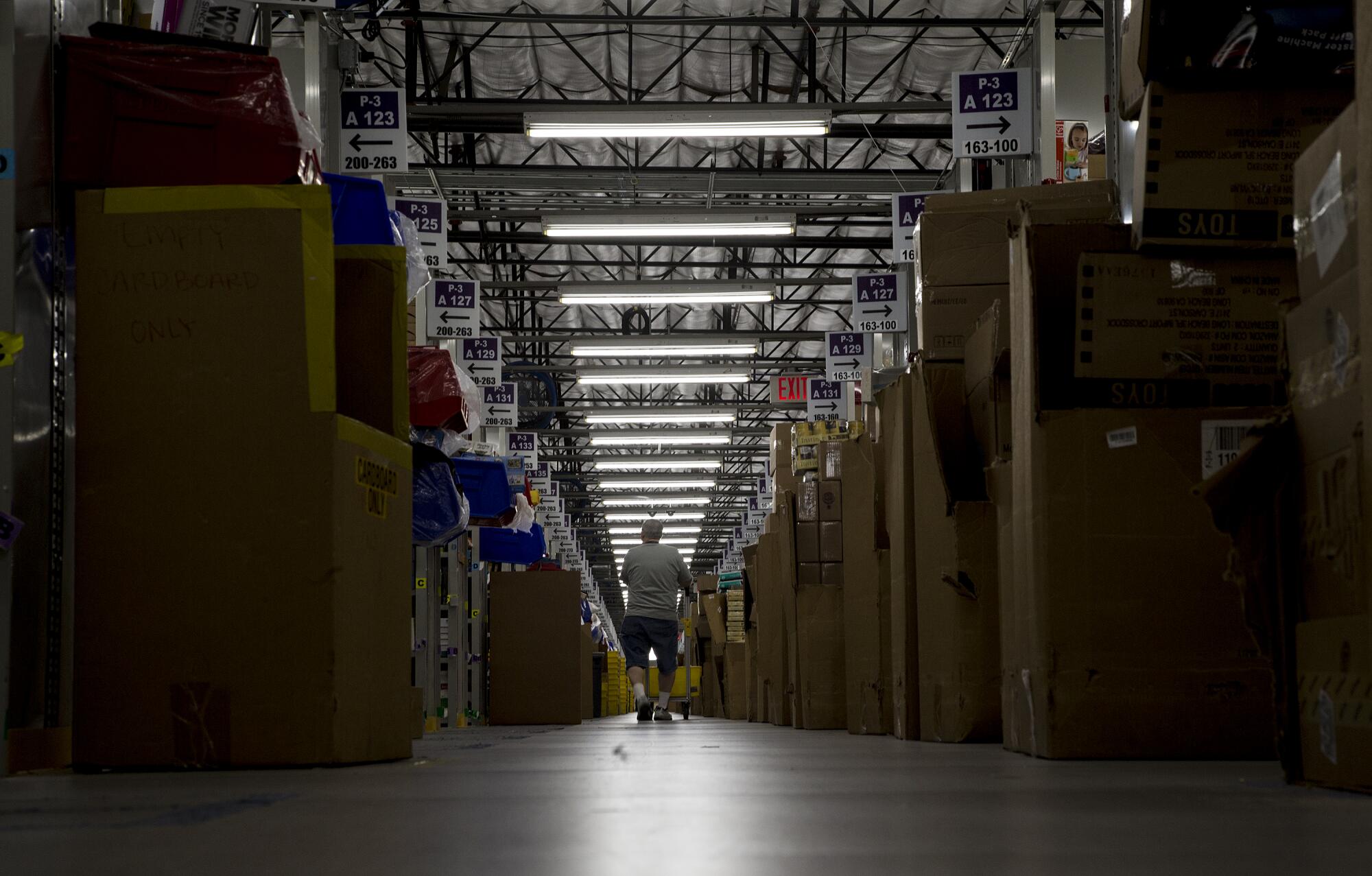
Backers of the project further warn in court filings that the litigation could “delay investment of millions of dollars in major infrastructure improvements to roads, water lines, sewer systems, electrical systems, and bridges in the surrounding community.”
The fate of the airport project is in the hands of the U.S. 9th Circuit Court of Appeals, which has heard arguments but has yet to issue a ruling.
California officials are trying to chart a course that forces the rapidly expanding logistics industry to confront the environmental injustice spawned by its explosive growth. The hulking warehouses and the masses of trucks that ferry products to and from them are getting wedged between residential communities, alongside schools and churches. Physicians have even coined a phrase for the unfortunate properties that now neighbor the warehouses: “diesel death zones.”
Bonta bristles at complaints from local leaders that the limits his office wants to impose on projects would make them economically unworkable and cost jobs.
Climate credits sold to California polluters bring billions to landowners. But scientists ask if that’s an environmental investment or a Ponzi scheme.
“It’s a false choice that’s being presented that you either have the project with all the job creation and economic stimulus that it provides, or you can protect the environment,” he said. “That’s wrong. You can do both.... We are saying that we must do both.”
Some communities are embracing detailed guidance the attorney general’s office has published laying out steps local officials can take when considering warehouse projects to protect residents, limit environmental harm and promote transparency.
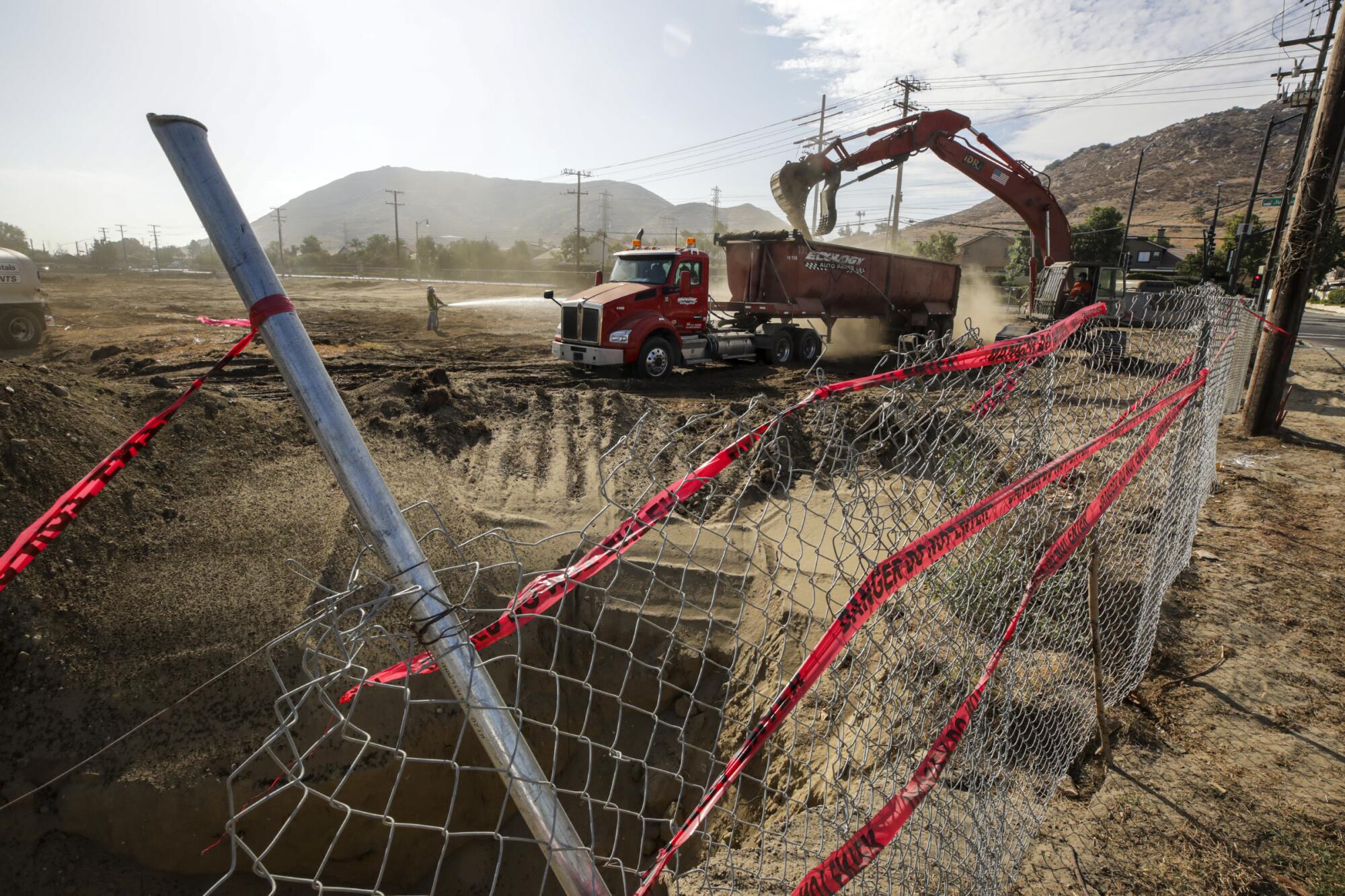
Fontana is not among those communities. The southern portion of the city is described by Bonta’s office in a recent court filing as “the statewide epicenter of warehouse development.” More than 20 warehouses already operate within a mile of another planned facility the state is suing to stop; most were built within the last decade.
The mayor of Fontana, Acquanetta Warren, takes pride in her moniker “Warehouse Warren.”
She and her allies on the City Council say the warehouse projects give jobs to residents who previously had to make the onerous daily trek to Orange County or Los Angeles for work.
“It is disingenuous to attribute poor air quality exclusively to new and recent logistics development in our region,” Warren said in an email to The Times. She noted the region was grappling with air quality issues long before warehouses emerged, pointing to the unique geography that traps auto and other emissions into communities.
“I have a difficult time with the concept that any job is a bad job,” Warren wrote in response to residents who complain that the low-wage jobs warehouses bring are not a fair tradeoff for their negative effect on health and quality of life. “Nurturing an environment of opportunity is what I find to be the most important.”
The attorney general’s lawsuit against the city was launched only after a contentious July council hearing that stretched for three hours, during which one resident after another took to the lectern to plead with the city to reconsider its approval of the 205,000-square-foot project, complaining that the deluge of warehouses is suffocating the community.
This particular warehouse would be built alongside Jurupa Hills High School, where the 2,000 students are predominantly Latino and 83% of them qualify for free or reduced-price meals. Two other schools are within two blocks of the proposed development, and trucks would come rumbling by homes to get to the facility. The neighborhood is already more polluted than 98% of the census tracts in the state, according to CalEnviroScreen.
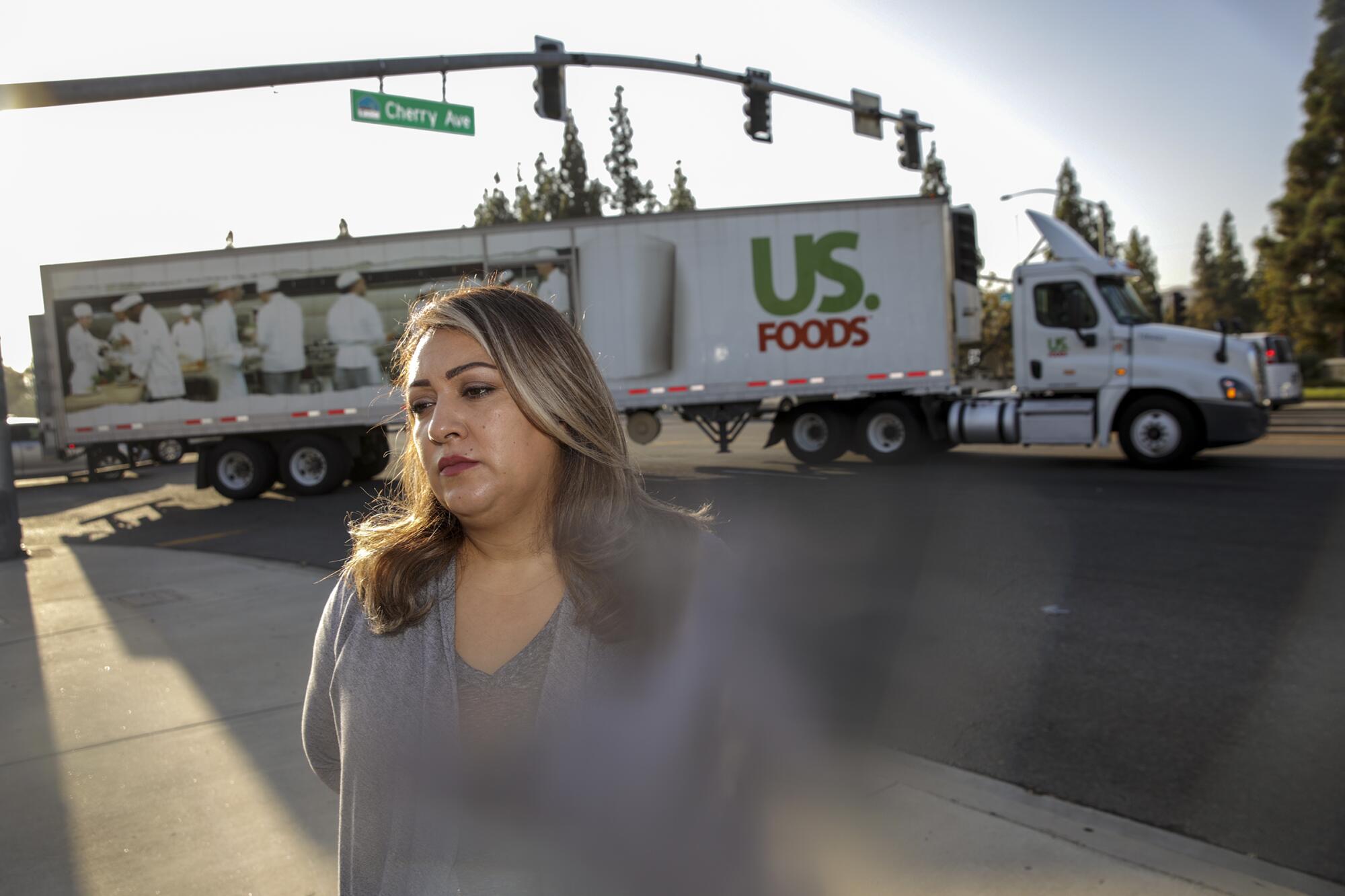
“We’re seeing thousands of trucks per day,” said Faraz Rizvi, an organizer with the Center for Community Action and Environmental Justice, a local nonprofit. “You’ll have large queues of trucks that are waiting to get into the warehouses, and they’ll sit and idle.... And because they’re right next to homes, it just spews all of these toxins right into your backyard.”
The planned warehouse that drew the lawsuit from the attorney general’s office sits right next to another property alongside Jurupa Hills High School that has also been approved for a massive warehouse. State attorneys say the city is ignoring the cumulative impacts of all the projects when it declares each new one passes environmental muster.
So many trucks rumbled by the windswept lots adjacent to the school on a recent weekday morning, it was difficult to hold a conversation. As weeds and pieces of debris blew around the site, Liz Sena, a 34-year-old mother of two, expressed exasperation that plans were abandoned to build on the site a sit-down restaurant and retail stores. The neighborhood has hardly any such services.
Sena pointed to a large wooden sign announcing the zoning change permitting one of the warehouse projects adjacent to the school. The contact information for the developer lists a Beverly Hills address.
“They come into our community and they build their developments here,” she said. “Then they go back to Beverly Hills to enjoy their beautiful, clean air.”
Sena and the other residents fighting the warehouse boom have been outspent and outgunned for years. They did not expect the attorney general to step into their fight.
“To have the attorney general’s office be involved in this case and file a lawsuit against the city of Fontana is very validating,” Sena said. “It sends a very loud and clear message that what the city is doing is not right.”
In the name of climate action, California pushed the world toward electric cars. But building enough of them is creating its own environmental crises.
More to Read
Get the L.A. Times Politics newsletter
Deeply reported insights into legislation, politics and policy from Sacramento, Washington and beyond. In your inbox twice per week.
You may occasionally receive promotional content from the Los Angeles Times.

